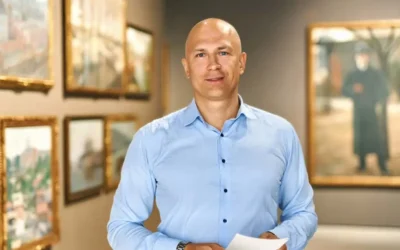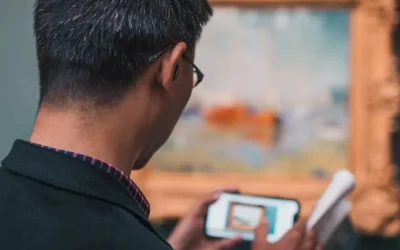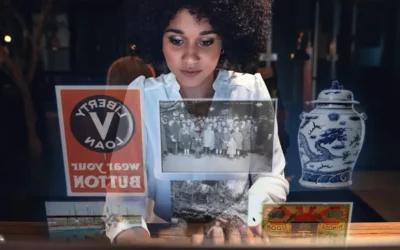Myth #5: If it’s Digital, Toss the Original

Rachael Cristine Woody
There’s usually no threat to museum objects being imaged and then suggested for disposal. However, I’ve heard this recommended way too many times as a course for archives to consider.
As archival materials are often found in and around museum collections, this post is a necessary part of the museum digitization myth series. As this is the fifth post in this series, we’ve covered quite a bit of ground. If you’re in need of a quick refresher on the information shared in the previous posts, here are the links:
- Myth #1: You Should Digitize All the (Museum) Things!
- Myth #2: It’s Easy to Digitize Museum Collections
- Myth #3: It’s Hard to Digitize Museum Collections
- Myth #4: Digital = Permanent
Together, these posts have reviewed the challenges, fallacies, and opportunities present when these myths are explored. We’ve learned that digital projects can be daunting, but also, completely achievable. We’ve also learned that digitization isn’t permanent, it doesn’t yield a permanent medium, and we have no idea how long we may have access to any digital file.
Digitization is Not a Reason for Disposal
For museums with archives, and especially for museums with archives and no archivists, this post is for you. Do not *ever* recommend that a portion of the archives be disposed of because it was digitized. There are legitimate collection management reasons as to when and why disposal is acceptable and digitization is not (on its own) a reason. Here’s why:
- Digital files still pale comparisons to an original. They still cannot fully capture information we receive with our five senses. And for archives, this contextual information is valuable.
- Digital files aren’t permanent. If and when loss to the digital file happens, the original will be needed.
- The quality of imaging or digitally migrating archival media is improving every day. A collection digitized 10 to 20 years ago may warrant updated work.
Digitization Is a Preservation Tool, Not a Replacement Tool. The one acceptable circumstance in which digitization can lead to disposal of the original is when the original is rapidly deteriorating and unsalvageable. This may be the case for:
- Highly acidic papers that are so brittle they’re flaking apart.
- Photographs and negatives where the emulsion is breaking down, gooping, and sticking to everything.
- Items that have been taped, glued, laminated, or otherwise had a substance applied to it that is actively breaking it down.
- The medium is so old and/or rare that it may be difficult to find a device in the future that can access the material. This can be the case for some audio-visual mediums.
- Items are so fragile they cannot be handled.
In these instances, digitization is employed as a preservation method because the information would be lost otherwise.
Back to Stewardship Basics
As stewards of the collection, it’s our responsibility to care for and manage the collections. This extends to the digital surrogates of the museum collection. Digital surrogates are a collection and one that requires similar treatment. For example, collection workers are responsible for:
- Safeguarding the integrity of the digital collection items with preservation best practices.
- Using appropriate digital storage containers and digital storage practices.
- Placing security and access measures in place so that the digital collection can be accessed safely and as intended.
As you can see, these responsibilities for the digital collection are the same responsibilities one has for the physical collection aka the originals.
Conclusion
If this museum digitization myth series has shown us anything, it’s that there is so much to consider when we decide to engage in collection digitization. It can be overwhelming and there is a lot we don’t know, but it’s becoming a powerful tool for how museums work with and share collections. This is an area of practice that will be imperfect and uncomfortable, but the potential for how much good it can do is reason enough to propel us into the discomfort.

Rachael Cristine Woody
If you’d like to learn more about this topic, register here for Rachael’s upcoming webinar, “5 Museum Digitization Myths to Delete Forever” on May 25, 2022 (TODAY!) at 11 a.m. Pacific, 2 p.m. Eastern. Rachael Cristine Woody advises on museum strategies, digital museums, collections management, and grant writing for a wide variety of clients. In addition to several titles published by Lucidea Press, she is a regular contributor to the Think Clearly blog and an always popular presenter. And remember to check out Lucidea’s Argus solution for powerful and innovative museum collections management.
Never miss another post. Subscribe today!
Similar Posts
Storytelling to Inspire Reflection Using Museum Collections Online
Storytelling with online collections is impactful, whether we choose online-only or as part of a hybrid approach to museum exhibitions.
Museum Collections Online: Learning Through Storytelling
Digitizing museum collections introduces new and engaging opportunities for storytelling. By leveraging digital surrogates—essentially online representations of physical objects—museums can enhance how they present narratives and information to audiences.
The Role of Museum Collections Online in Storytelling & Audience Engagement
Storytelling with museum collections online allows for a great degree of flexibility, offers additional detail, and lends a dynamism that is difficult to produce within a physical exhibition.
Examples of How Archives Can Be Used to Elevate Museum Collections
Last week we reviewed how archives can enhance museum collections online. This week will continue our work with an examination of specific examples, including what items different types of archives may contain and where to capture this data.




Leave a Comment
Comments are reviewed and must adhere to our comments policy.
0 Comments